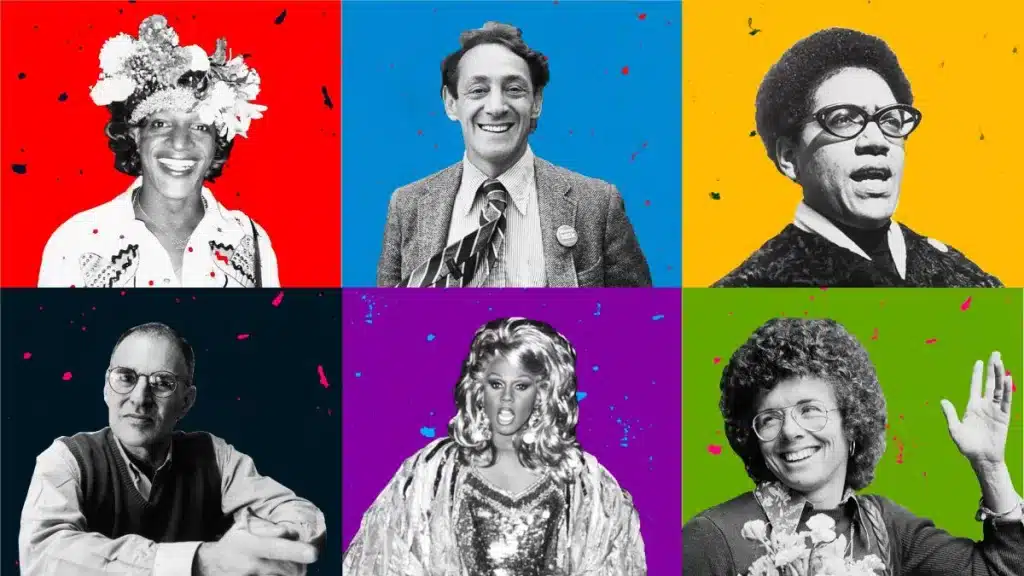The LGBTQ+ community has a long history of fighting for their rights, especially in politics. From the Stonewall riots in 1969 to today, LGBTQ+ individuals and allies have been organizing and advocating for legal protections, social acceptance, and political representation. In this article, we’ll explore the history of LGBTQ+ activism and political advocacy, looking at key moments, individuals, and movements that have shaped the fight for LGBTQ+ rights.
The Stonewall Riots and the Birth of the Gay Rights Movement
The Stonewall riots of 1969 are widely recognized as the starting point of the modern LGBTQ+ rights movement. The riots occurred in New York City when police raided the Stonewall Inn, a popular gathering spot for LGBTQ+ individuals. The raid sparked several protests and clashes between police and the LGBTQ+ community, lasting several days. The riots brought the issue of LGBTQ+ discrimination to national attention and galvanized the community to organize and demand change.
Following the riots, several LGBTQ+ advocacy groups emerged, including the Gay Liberation Front (GLF) and the Gay Activists Alliance (GAA). These groups worked to promote LGBTQ+ rights and visibility, organizing rallies, marches, and protests nationwide. They also played a crucial role in advocating decriminalizing homosexuality, which was still illegal in many states.
The AIDS Crisis and LGBTQ+ Activism
The 1980s brought a new challenge for the LGBTQ+ community with the emergence of the AIDS crisis. The disease disproportionately affected LGBTQ+ individuals, and the lack of government response and public attention fueled anger and activism within the community. Organizations like ACT UP (AIDS Coalition to Unleash Power) emerged to demand action from the government and pharmaceutical companies, organizing protests and direct actions to bring attention to the crisis.
The AIDS crisis also brought attention to broader issues facing the LGBTQ+ community, including discrimination, healthcare access, and political representation. LGBTQ+ activists pushed for increased funding for AIDS research and treatment and expanded civil rights protections for the community.
LGBTQ+ Rights and Political Representation
In recent years, the fight for LGBTQ+ rights has focused on legal protections and political representation. In 2015, the Supreme Court ruled in favor of marriage equality in the landmark case Obergefell v. Hodges, a major victory for LGBTQ+ advocates. The ruling legalized same-sex marriage nationwide and signaled a major shift in public opinion on LGBTQ+ rights.
However, the fight for LGBTQ+ rights is far from over. Many states still lack protections for LGBTQ+ individuals in housing, employment, and healthcare. Transgender individuals in particular, face significant discrimination and violence, with a wave of anti-trans legislation sweeping the country in recent years.
In addition to legal protections, LGBTQ+ advocates are pushing for increased political representation. LGBTQ+ individuals are significantly underrepresented in elected office, with only a handful of openly LGBTQ+ individuals serving in Congress or state legislatures. Organizations like the Victory Fund and Emily’s List work to support LGBTQ+ and women candidates to increase representation and advance LGBTQ+ rights.
Conclusion
The history of LGBTQ+ activism and political advocacy is a long and ongoing struggle. From the Stonewall riots to the fight for marriage equality and beyond, LGBTQ+ individuals and allies have been working tirelessly to promote equality and justice for all. While progress has been made, much work is still to ensure that all LGBTQ+ individuals are protected and represented in society and politics. The fight for LGBTQ+ rights is a fight for human rights, and it’s up to all of us to continue the fight for quality and acceptance for all members of the LGBTQ+ community.
One of the key aspects of LGBTQ+ activism and political advocacy is the power of community organizing. Throughout history, LGBTQ+ individuals and their allies have come together to create change through protests, rallies, and grassroots campaigns. These efforts have often been met with resistance and violence but have also resulted in significant gains for the community.
In addition to community organizing, LGBTQ+ activism has also relied on strategic alliances with other social justice movements. This intersectional approach recognizes that LGBTQ+ individuals are not a monolithic group but rather intersect with other marginalized communities based on race, class, and gender identity. By forging alliances with other social justice movements, LGBTQ+ activists have amplified their message and created more inclusive, intersectional movements for change.
Looking ahead, the fight for LGBTQ+ rights and representation in politics is likely to continue. As LGBTQ+ individuals gain more visibility and acceptance, they face new challenges and obstacles. However, the history of LGBTQ+ activism and advocacy in politics has shown that with persistence, community organizing, and strategic alliances, significant progress can be made toward a more just and equal society for all.

